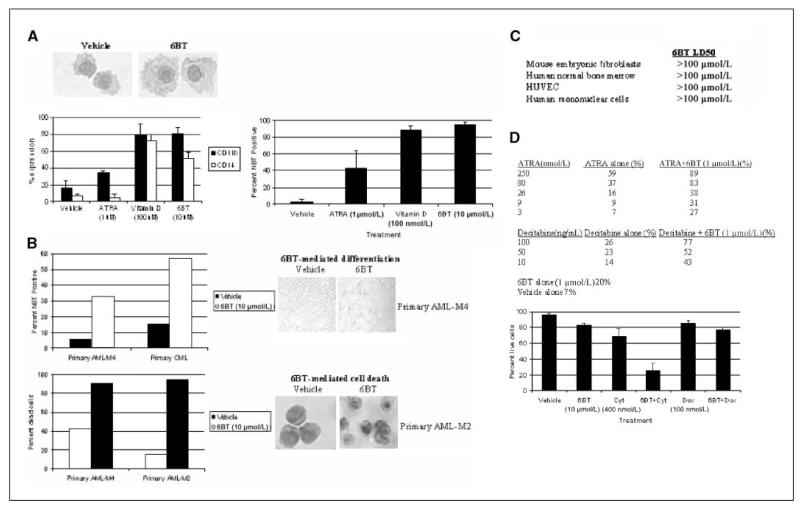Figure 4.
6BT has differentiation and specific cell death activity in multiple AML cell lines and patient samples, and can synergize with clinically used therapeutics. A, 6BT induces monocytic differentiation of OCI-AML3 cells. Cells were treated with 6BT for 4 d and assessed for differentiation by morphology, immunophenotyping, and NBT reduction as described in Fig. 2. B, 6BT can induce differentiation or cell death in primary patient samples. Primary leukemic blasts were purified by flow sorting after staining with CD34-PE. Cells were treated with 6BT (10 μmol/L) for up to 10 d and assessed for differentiation by morphology and NBT reduction and cell death by trypan blue dye exclusion as described in Fig. 2. An exception is that the photograph of the primary AML-M4 patient sample was unstained and taken directly from the tissue culture plate. C, 6BT exhibits low in vitro toxicity. The indicated cell lines were treated with up to 100 Am of 6BT for 5 d, and the LD50 was determined. Results represent three independent experiments. D, 6BT can synergize in HL-60 cells with ATRA, decitabine, and cytarabine. To assess ATRA and decitabine synergy, HL-60 cells were treated with the indicated compounds for 4 d, and the NBT reduction assay was performed as described in Fig. 2. Results are representative of three independent experiments. To assess cytarabine synergy, cells were treated with the indicated compounds for 72 h and viable cells were assessed by trypan blue staining. Results are an average of three independent experiments. Cyt, cytarabine; dox, doxorubicin.

